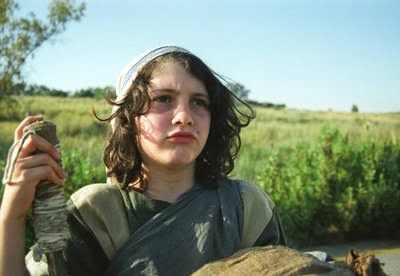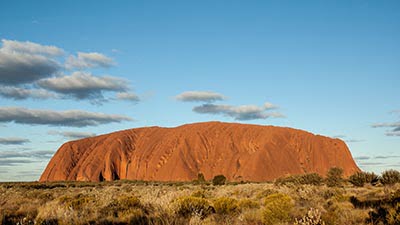Thursday: Sabbath Rest for the Land
As we have seen, Sabbath was an ingrained part of the lifecycle of the Israelite nation. But the Sabbath principle was not just about a day each week. It also included a special rest each seventh year, culminating in the year of jubilee after seven sets of seven years, meaning each 50th year.
Read Leviticus 25:1-7. What is remarkable about this kind of instruction? In what possible ways could you incorporate this kind of principle into your life and work?
The Sabbath year allowed the farm land to lie fallow for the year. It is a remarkable act of stewarding the land, and the wisdom of this as an agricultural practice has been recognized widely.
The seventh year was also significant for slaves (see Exod. 21:1-11). In the event that any of the Israelites became so indebted as to sell themselves into slavery, they were to be freed in the seventh year. Similarly, outstanding debts were to be canceled at the end of the seventh year (see Deut. 15:1-11).
Like the manna God provided to the Israelites in the wilderness, not planting crops for a season was an act of trust that God would provide enough in the previous year and from what the ground produced by itself in the Sabbath year. Similarly, to release slaves and cancel debts was an act of mercy but also an act of trust in the power of God to provide for our needs. In a sense, the people needed to learn that they didn’t have to oppress others in order to provide for themselves.
The principles and pattern of the Sabbath were to be closely tied to the structure of the Israelite society as a whole. Similarly, contemporary Sabbath keeping should be a spiritual discipline that transforms all our other days. In a practical sense, the Sabbath is one way of living out Jesus’ instructions to seek first His kingdom: “Your heavenly Father already knows all your needs … and he will give you everything you need” (Matt. 6:32-33, NLT).
| What difference should keeping the Sabbath make to the other six days of your week? After all, if you are greedy, selfish, and uncaring from Sunday through Friday, what does it really matter if you are none of these things on Sabbath? (Or truly can you not be those things on Sabbath if you are that way the rest of the week?) |
 (25)
(25)

Right now we have a bit of a crisis at Uluru (Ayres Rock). For those of you who are unfamiliar with Australian geography, right in the center of Australia we have this huge iconic monolithic red rock. Everyone who visits the site wants to climb it. Tourists from all over the world climb it as though it is one of the seven wonders of the world. Australians put it on their bucket list to climb before they die. The ownership of Uluru was returned to the local Aboriginals several years ago. To them, it is a sacred site and it annoys them that people climb this rock without any respect for it whatsoever. Many people have died falling off the rock. They have also died from heart failure climbing Uluru. Each time someone dies they close the rock to climbers out of respect for them. Furthermore, there are no toilets at the top and after climbing to the top, people do what people generally do when they have been away from civilization for more than a few hours. Uluru is in one of the driest places in the world. It does rain sometimes, and when it does the runoff it toxic with human waste. In October this year, the aboriginal owners are permanently closing Uluru for climbing. They have had enough and say that human traffic is destroying their sacred site. This has caused chaos, as for the last few months, just about every fit person in the world wants to climb it before it is closed. The crowds currently visiting Uluru are stretching accommodation to the limit and crowds of people are arriving there every day. camping areas, toilets, roads, are all under the extreme pressure of overcrowding.

Uluru provides an illustration of the worldwide problem of overuse. Not only tourism, but land management for agriculture and cultivation, and management of wild fish stocks, are all suffering from overuse. The lesson today reminds us that there was a principle set out in the Bible that steps should be taken to ensure that time should be set aside for resting agricultural land. It is unclear whether the seven-year plan was ever put into practice in detail, however, the notion has been put into practice with the ideas of allowing cultivated land to lie fallow and crop rotation. We need to take that idea and expand it to include the management of other natural resources as well. All too often we are driven by greed and profitability.
The impact of human population expansion has put pressure on our resources, not only in food production but also in retaining the earth as a beautiful place to live. Seventh-day Adventists may be focussed on the second coming of Jesus but that does not absolve us from good management practice now.
Why is the 7th year Sabbath rest not a practice amongst Sabbath keepers today? According to my understanding: The 7th year Sabbath rest is an extension of the 4th commandment and not a ceremonial law.
The Shmita (Sabbath Year) was never part of the Ten Commandments and further, even in both Biblical and secular sources, it appears that it was not consistently kept by the Israelites. It was essentially regarded as an agricultural law and supports the idea of allowing land to lie fallow to allow it to recover from cropping. It is suggested that the idea was replaced by land usage rotation when the Israelites settled. This allowed for land to lie fallow but not all at the same time.
It needs to be remembered that there are quite a lot of civil and health laws included in the Torah and these were couched in religious terms simply because that is the way people thought in those days. However, there appears to be a distinction between those laws and the ten commandments. I should add that the civil and health laws as written in the Bible embody a lot of useful principles and we can certainly benefit from understanding their purpose.
Rest for the Israelites
Rest for the strangers within your gate
Rest for the slaves
Rest for the animal
Rest for the land
What is God's instruction for us?
Deuteronomy 31
9 So Moses wrote down this law and gave it to the Levitical priests, who carried the ark of the covenant of the Lord, and to all the elders of Israel. 10 Then Moses commanded them: “At the end of every seven years, in the year for canceling debts, during the Festival of Tabernacles, 11 when all Israel comes to appear before the Lord your God at the place he will choose, you shall read this law before them in their hearing. 12 Assemble the people—men, women and children, and the foreigners residing in your towns—so they can listen and learn to fear the Lord your God and follow carefully all the words of this law. 13 Their children, who do not know this law, must hear it and learn to fear the Lord your God as long as you live in the land you are crossing the Jordan to possess.”
This is the year they had a revival meeting talking about the historical account of the mighty hand of God in the life of the Israelites.
This radical demonstration shows to their neighbor they belonged to God.
Israel was also declaring their belief that God would meet their needs.
"During the Autumn Council of the General Conference Committee, held September 20 to 27, 1922 in Kansas City, Missouri, USA, the delegates prayerfully decided to ask church members to give a sacrificial one week’s wage to cover the quarter of a million dollar budget deficit that year. In spite of the difficult conditions of the early 1920s, members responded by giving more than $350,000 over the following year to what became known as the Annual Week of Sacrifice Offering.
The sacrifice that our world church membership of 208,771 Seventh-day Adventists made back in 1922 is remarkable when their contribution is translated into today’s dollars. Applying the cumulative inflation rate (1,196.92%) as determined by the United States Government Bureau of Labor Statistics between the dates, December 1922-December 2010, that contribution of $350,000 back then is equivalent to $4,189,220 today in purchasing power—twenty dollars per member in 1922 (adjusted for inflation), compared to three dollars per member given in the year 2010!"
https://stewardship.adventist.org/2012-16-1-annual-sacrifice-offering
What is our sacrificial response?
Again, I believe each one reading this blog can testify to the sacrificial response in their life.
I gotta say. The best way I can answer that first question for today is sometimes, You have to let go, and let GOD